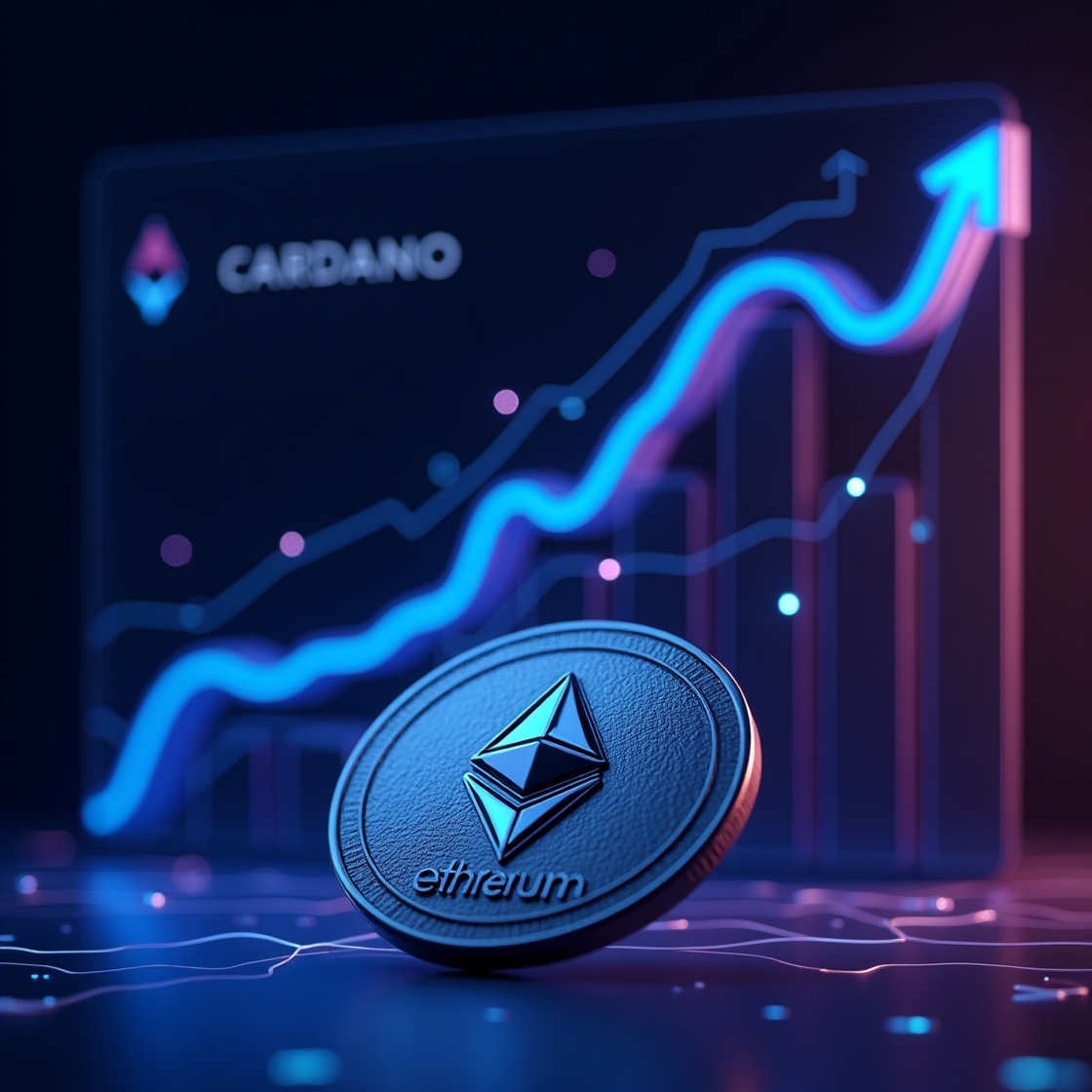Cardano’s Growth in 2025: Can It Overtake Ethereum in Smart Contracts?
Cardano’s Growth in 2025: Can It Overtake Ethereum in Smart Contracts?
In the ever-evolving world of blockchain and cryptocurrency, few platforms have garnered as much attention as Cardano. Launched by Ethereum co-founder Charles Hoskinson, Cardano has been marketed as a more scalable, secure, and sustainable blockchain solution compared to Ethereum. With its unique Proof-of-Stake (PoS) consensus algorithm and a strong emphasis on academic rigor, Cardano has quickly become a significant player in the blockchain space. As we look ahead to 2025, the question arises: Can Cardano overtake Ethereum in the realm of smart contracts and decentralized applications (dApps)?
The Smart Contract Race: Ethereum’s Dominance
Since its inception in 2015, Ethereum has been the gold standard for smart contracts, decentralized finance (DeFi), and dApps. Ethereum’s ability to facilitate programmable contracts has paved the way for a wide variety of blockchain-based applications, from DeFi protocols to NFTs (Non-Fungible Tokens). Despite facing scalability issues and high transaction costs, Ethereum remains the dominant platform for smart contracts, with the majority of dApps and projects built on its blockchain.
Ethereum’s Proof-of-Work (PoW) consensus algorithm has served as a strong foundation for its network. However, with the increasing popularity of decentralized applications, Ethereum has struggled with scalability, high gas fees, and slower transaction speeds. These issues have led to the development of Ethereum 2.0, which aims to transition the network to a Proof-of-Stake (PoS) consensus algorithm, improve scalability, and reduce energy consumption. While Ethereum 2.0 promises to address many of these issues, the transition is a complex and ongoing process, which creates an opening for competitors like Cardano to challenge its dominance.
Cardano’s Unique Approach to Blockchain
Cardano differentiates itself from Ethereum in several key ways, starting with its scientific approach to blockchain development. Cardano was designed from the ground up to address the scalability, security, and sustainability issues that have plagued older blockchains like Ethereum. Rather than rushing to launch a functional blockchain, Cardano took a more methodical approach, focusing on peer-reviewed research and formal verification of its code to ensure the network’s robustness.
Cardano operates on a PoS consensus mechanism called Ouroboros, which is both energy-efficient and highly scalable. This stands in contrast to Ethereum’s PoW, which requires massive computational power and results in slower transaction speeds and higher energy consumption. With its PoS model, Cardano can process transactions more efficiently and with lower fees, a significant advantage as the demand for blockchain services continues to grow.
Furthermore, Cardano has placed a strong emphasis on interoperability, allowing it to seamlessly interact with other blockchain networks. This focus on creating a multi-chain ecosystem enables developers to build decentralized applications that can connect to other networks, making Cardano a more versatile and scalable option for developers.
The Role of Smart Contracts in Cardano’s Growth
Smart contracts are at the heart of any blockchain that aims to support decentralized applications, and Cardano’s roadmap has been carefully structured to include the implementation of smart contract functionality. In 2021, Cardano launched its smart contract platform, Alonzo, which brought the ability to deploy decentralized applications on the network. While Cardano’s smart contract functionality initially lagged behind Ethereum in terms of maturity, the platform has quickly caught up, with an increasing number of projects being launched on its blockchain.
Cardano’s smart contracts are built on a language called Plutus, which is based on Haskell—a functional programming language known for its strong safety and reliability features. This makes Cardano’s smart contract environment particularly appealing to developers who prioritize code correctness and formal verification. Additionally, Cardano’s support for multiple programming languages, including Plutus and Marlowe, allows for greater flexibility in smart contract development.
In 2025, as Cardano continues to improve its smart contract capabilities and expand its dApp ecosystem, it is poised to become a more serious contender in the smart contract space. Cardano’s robust focus on academic research, security, and scalability provides a strong foundation for the platform to support a diverse range of decentralized applications. With the upcoming enhancements in 2025, including improved governance mechanisms and better scalability solutions, Cardano may attract more developers and businesses seeking a more reliable and cost-effective alternative to Ethereum.
Can Cardano Overtake Ethereum?
While it is still too early to definitively answer whether Cardano can overtake Ethereum in the smart contract arena by 2025, there are several factors that could influence the outcome of this race.
- Scalability and Efficiency: Cardano’s PoS consensus algorithm, Ouroboros, has already demonstrated its ability to scale efficiently and process transactions at a lower cost compared to Ethereum. As demand for blockchain-based applications grows, scalability will become an even more crucial factor. If Cardano continues to improve its throughput and transaction speeds while maintaining low fees, it could become the preferred choice for developers and users, especially in sectors like DeFi, where high gas fees on Ethereum have become a significant barrier.
- Ethereum 2.0 and Transition to PoS: Ethereum’s shift to Ethereum 2.0, which will introduce PoS to its network, is a game-changer for the platform. Ethereum 2.0 promises to address the network’s scalability issues and reduce its environmental impact. If the transition to PoS is successful and Ethereum can handle a larger number of transactions at lower costs, it could maintain its dominance in the smart contract space. However, if the transition faces delays or technical issues, Cardano could take advantage of this window to gain market share.
- Developer Adoption and Ecosystem Growth: The success of any blockchain platform depends on the strength of its developer community and the projects built on it. Cardano has made significant strides in attracting developers by offering a more secure and scalable environment for smart contract development. However, Ethereum still boasts a much larger and more established developer community, which gives it a considerable advantage in terms of the number of dApps and projects available. Cardano will need to continue incentivizing developers and expanding its ecosystem to compete with Ethereum.
- Governance and Community Support: Cardano’s emphasis on decentralized governance, through its treasury system and community-driven decision-making, allows stakeholders to have a say in the platform’s future. This approach could foster greater long-term sustainability and innovation. Ethereum, on the other hand, has struggled with governance challenges and centralization concerns. If Cardano can maintain strong community support and governance, it may have a significant edge in the race.
The Road Ahead for Cardano
In 2025, Cardano will likely have made significant strides toward challenging Ethereum’s dominance in the smart contract space. However, overtaking Ethereum will depend on the successful execution of its roadmap, continued improvements in its scalability, and the growth of its developer ecosystem. While Ethereum remains the leader for now, Cardano’s unique approach and emphasis on sustainability, security, and scalability position it as a formidable competitor in the race for smart contract supremacy.
The next few years will be critical for both platforms, and the outcome of this competition will likely depend on how each platform adapts to the rapidly evolving blockchain landscape. For now, Cardano’s future looks promising, and by 2025, it may have secured a significant place in the world of decentralized applications and smart contracts.




Post Comment